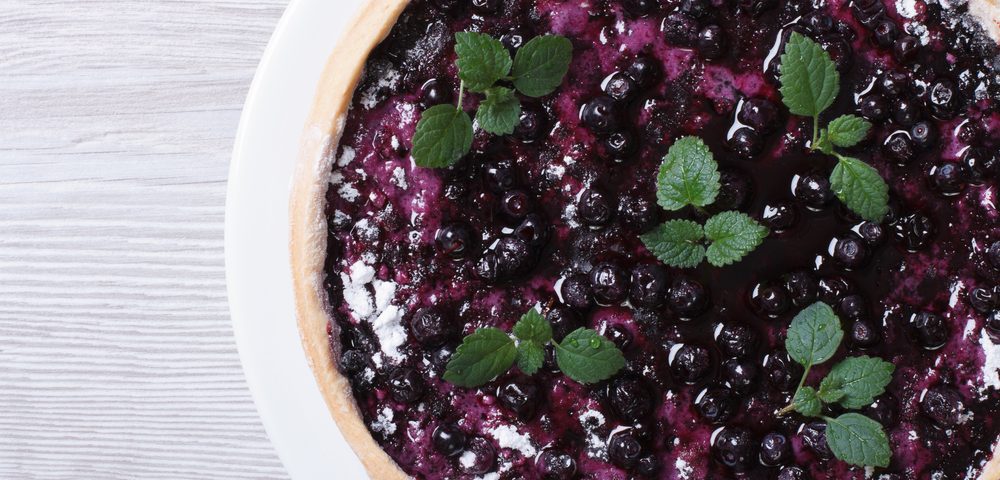Blackberries and Cream: Owning My Story with SMA

Tucked away near the rustic shores of a quaint lake sits my childhood home: a ranch house built of sincere brick and steadfast mortar. A wistful flowering crab tree adorns the front yard with tendrils of wisdom, its fuchsia blossoms bursting at the arrival of each new spring. Swirls of childhood memories often carry many of the same buzzwords. In one distinct way, my childhood was different than those of the other kids I knew: Where they left footprints, I left wheel prints.
The diagnosis of my SMA spiced up the recipe of my family’s daily life, but we kept rolling as best we could. My parents encouraged me to find outlets of interest, often reflecting a pattern of bonding with nature. My mom enrolled me in an equine therapy program for children with mobility challenges, where my summer was spent discovering balance and strength atop the back of a majestic horse named Ony. His gentle soul and pensive eyes saw that I could not stand, but he showed me kindness by lending me his strong frame. I moved through the world by sitting, so he lifted me up and helped me to sit tall.
My fondest memories with my dad involve exploring. He had a utility vehicle intended for navigating the roughest terrain — think of an open safari vehicle, with a Wisconsin twist (the sort of colossal outdoor buggy that would’ve come in handy for Frodo’s delivery of the ring to Mount Doom). My dad, always in his garage fixing something, fastened a chest harness to the passenger seat in a fashion so secure, it would’ve kept my backside nicely seated during a tornado.
We’d trek the forest trails together as the encore of summertime echoed amid the late August air, stopping alongside a row of blackberry bushes to pick a bucketful. He’d place me close enough to the bushes so I could gather some berries myself, happily content until the rumblings of a jetpack-equipped bumblebee left me shrieking in panic mode: “Dad! A bee … a BEE!”
Even small things with stingers are scary when you’ve no way to escape them easily. (I do admire bees and their unique mission for our planet.) Arriving home, my dad would scoop a few handfuls of washed berries into a cereal bowl, douse them with creamy milk and a generous dusting of sugar. My rambunctious appetite would instigate a riot between spoon, berry, cream, and sugar — leaving a sweet pond of violet liquid for the final devour.
They may not have realized it at the time, but my parents weren’t teaching me how to be a normal kid. They were teaching me how to be me on my voyage through life with SMA. How to be clever in connecting with the world around me. How to live imaginatively, think deeply, and communicate my needs to others. How to find the weirdest way of picking blackberries, and make the sweetest bowl of blackberries and cream. My parents gave me the tools to live my story.
The desire to be perceived as “normal” has long been a point of contention between my head and heart. I want people to see me rather than my wheelchair, but I also want them to be sensitive to the additional barriers that SMA has thrown in my pathway. At times, I’ve felt offended if people try too hard to make me feel normal by brushing off my SMA and all of its challenges. My SMA swirls around in the inkwell that fills the pages of my story, word after word. I’ve learned to love myself, SMA and all. I’ve learned to own it. In the pursuit of balance, talking about multifaceted perspectives helps us to build a more inclusive world.
My story is not one of achieving a sense of normalcy in the face of adversity, because my life hasn’t been normal. And it’s OK to admit that. It’s something to be celebrated. Profound beauty emanates from embracing our differences as humans. Throughout my life, I’ve shared in the same emotional intricacies that are considered normal for any given age or situation: the roller coaster high school years, dating drama, college conundrums, intimacy insecurity, self-image shakiness, and trying to decide on my true feelings about the complex characters in “Game of Thrones.” Normal stressors. But, how I experienced those circumstances, and what I took away from them, has been fiercely impacted by my SMA — there’s no denying that.
As soon as I learned how to seize a swell instead of struggling against the tide, I found freedom and gratitude in riding the waves. (Adaptive surfing ranks high on my endeavor docket; for now, I’ll live vicariously through my adventurous metaphors.) What’s so exhilarating about a normal life? Being rare is what makes us interesting.
***
Note: SMA News Today is strictly a news and information website about the disease. It does not provide medical advice, diagnosis, or treatment. This content is not intended to be a substitute for professional medical advice, diagnosis, or treatment. Always seek the advice of your physician or other qualified health provider with any questions you may have regarding a medical condition. Never disregard professional medical advice or delay in seeking it because of something you have read on this website. The opinions expressed in this column are not those of SMA News Today, or its parent company, Bionews Services, and are intended to spark discussion about issues pertaining to spinal muscular atrophy.








Leave a comment
Fill in the required fields to post. Your email address will not be published.